Solar eclipse of May 29, 1938
| Solar eclipse of May 29, 1938 | |
|---|---|
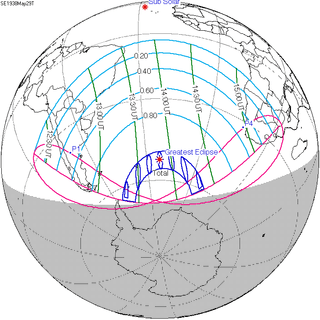 Map | |
| Type of eclipse | |
| Nature | Total |
| Gamma | -0.9607 |
| Magnitude | 1.0552 |
| Maximum eclipse | |
| Duration | 245 sec (4 m 5 s) |
| Coordinates | 52°42′S 22°00′W / 52.7°S 22°W |
| Max. width of band | 675 km (419 mi) |
| Times (UTC) | |
| Greatest eclipse | 13:50:19 |
| References | |
| Saros | 146 (23 of 76) |
| Catalog # (SE5000) | 9371 |
A total solar eclipse occurred on May 29, 1938. A solar eclipse occurs when the Moon passes between Earth and the Sun, thereby totally or partly obscuring the image of the Sun for a viewer on Earth. A total solar eclipse occurs when the Moon's apparent diameter is larger than the Sun's, blocking all direct sunlight, turning day into darkness. Totality occurs in a narrow path across Earth's surface, with the partial solar eclipse visible over a surrounding region thousands of kilometres wide.
Related eclipses
Solar eclipses 1935-1938
Each member in a semester series of solar eclipses repeats approximately every 177 days and 4 hours (a semester) at alternating nodes of the Moon's orbit.
| Ascending node | Descending node | |||
|---|---|---|---|---|
| 111 | January 5, 1935 Partial |
116 | June 30, 1935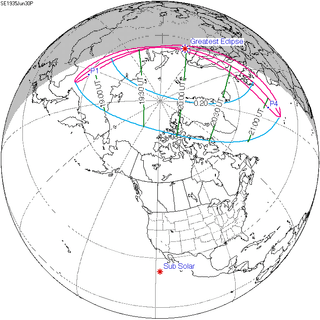 Partial | |
| 121 | December 25, 1935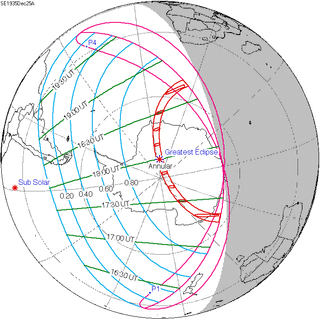 Annular |
126 | June 19, 1936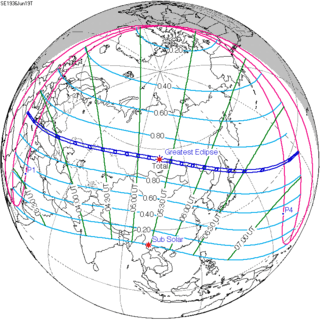 Total | |
| 131 | December 13, 1936 Annular |
136 | June 8, 1937 Total | |
| 141 | December 2, 1937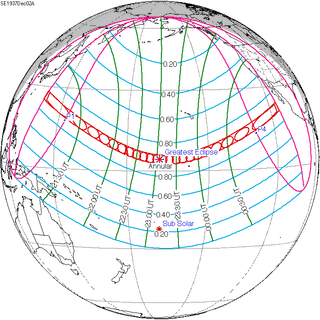 Annular |
146 | May 29, 1938 Total | |
| 151 | November 21, 1938 Partial | |||
Notes
References
- Earth visibility chart and eclipse statistics Eclipse Predictions by Fred Espenak, NASA/GSFC
| Wikimedia Commons has media related to Solar eclipse of 1938 May 29. |
This article is issued from Wikipedia - version of the 1/15/2016. The text is available under the Creative Commons Attribution/Share Alike but additional terms may apply for the media files.
